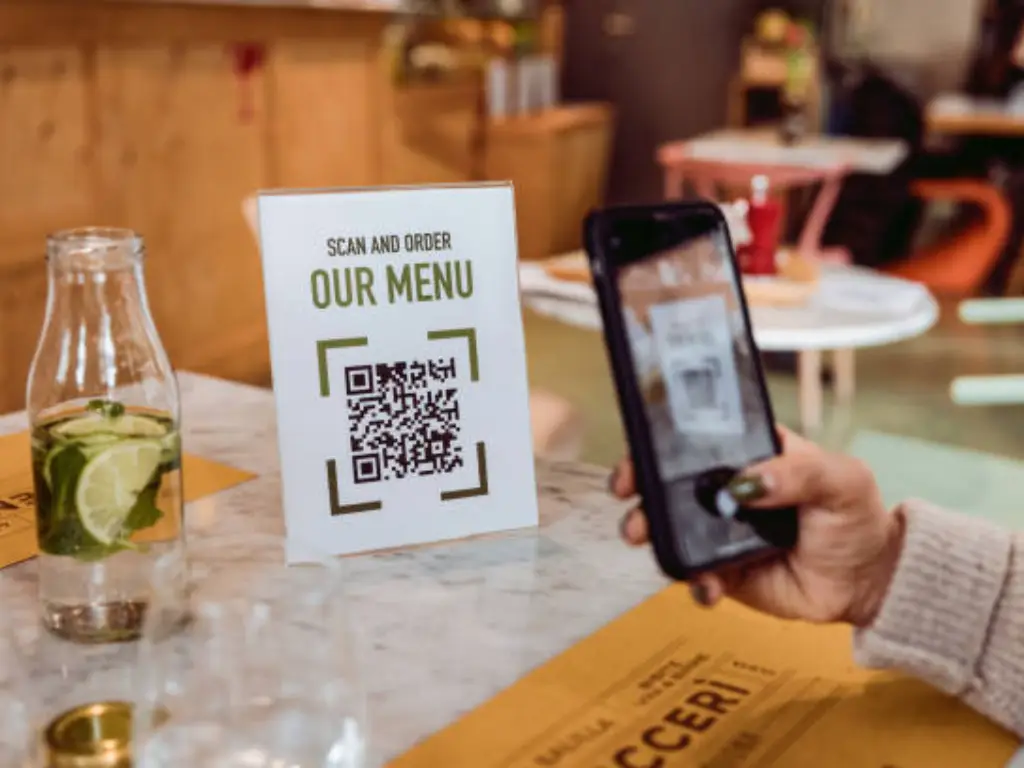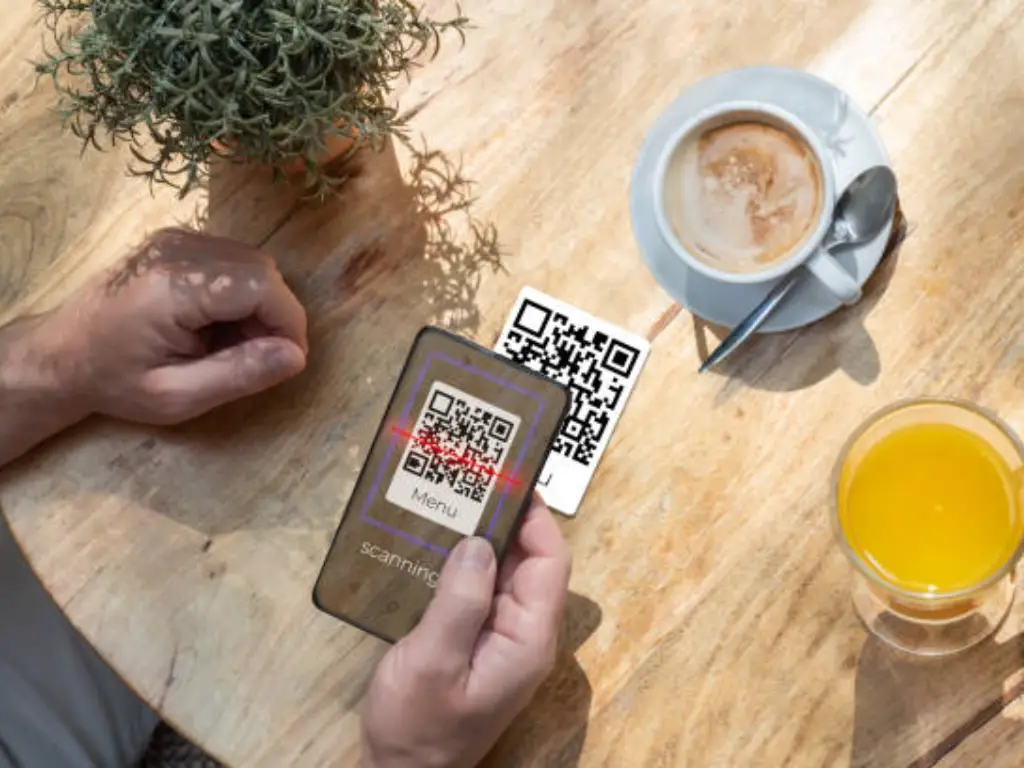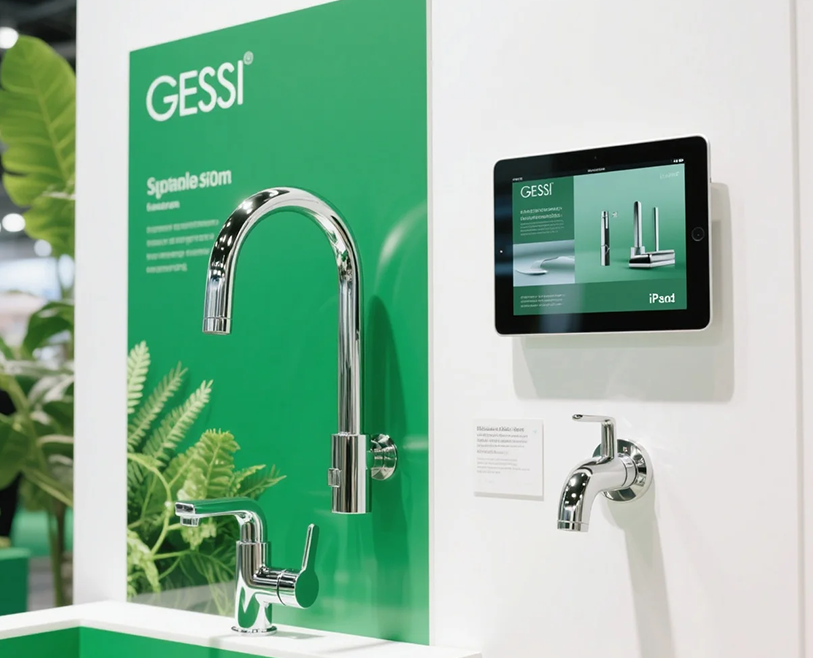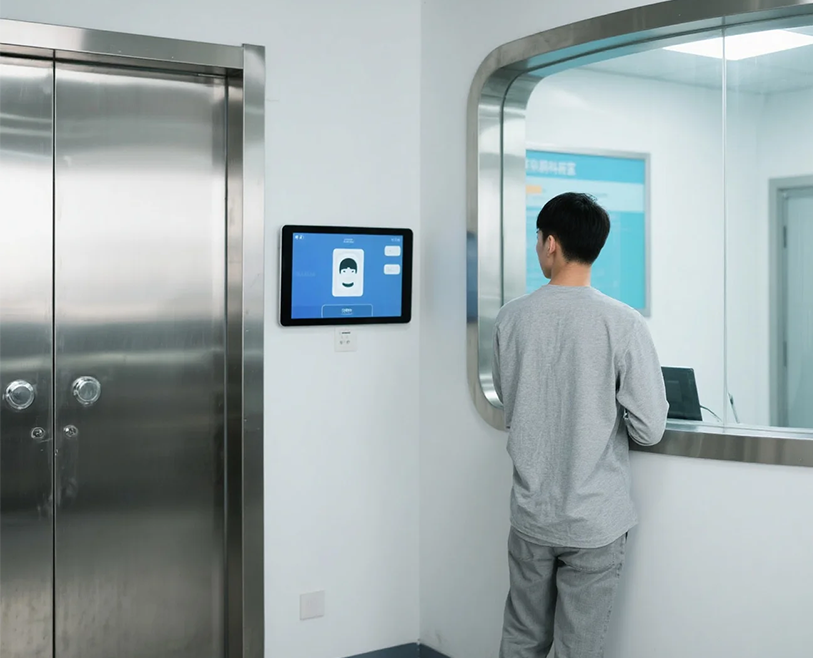Nel frenetico mondo digitale di oggi, la tecnologia ha trasformato il modo in cui mangiamo. Uno dei cambiamenti più significativi è l’introduzione dei sistemi di ordinazione self-service nei ristoranti. Ma quando si tratta di scegliere l’opzione migliore per la tua struttura, ti starai chiedendo: QR Ordining vs. Chioschi self-order: quale è il migliore? Immergiamoci nelle differenze, Vantaggi, e gli svantaggi di entrambe le opzioni, così potrai prendere una decisione informata per il tuo ristorante.
Differenze chiave tra l'ordinazione QR e i chioschi self-order
Per iniziare, definiamo innanzitutto cosa sono i QR ordering e i chioschi self-order:

- Ordinazione QR: L'ordinazione QR è un sistema in cui i clienti utilizzano il proprio smartphone per scansionare un codice QR visualizzato su un tavolo o allo sportello. Una volta scansionato, vengono reindirizzati a un menu digitale e possono effettuare l'ordine direttamente dal proprio telefono. Non è necessaria alcuna interazione fisica con il personale del ristorante, rendendolo un metodo di ordinazione comodo e senza contatto.

- Chioschi di auto-ordine: I chioschi self-order lo sono macchine touchscreen collocato all'interno di un ristorante dove i clienti possono sfogliare i menu, selezionare i loro ordini, e pagare. Questi chioschi sono generalmente situati nella sala da pranzo, consentendo ai clienti di completare l'intero ordine in modo indipendente senza attendere un server.
Ora, analizziamo le principali differenze tra l'ordinazione QR e i chioschi self-order da diversi punti di vista:
Investimento iniziale
- Ordinazione QR: Uno dei principali vantaggi degli ordini QR è il basso investimento iniziale. Tutto ciò di cui hai bisogno è un codice QR stampato e un semplice menu digitale ospitato su una piattaforma, il che significa che non ci sono pesanti costi hardware iniziali. I ristoranti possono iniziare a utilizzare gli ordini QR con un investimento minimo in tecnologia.
- Chioschi di auto-ordine: D'altra parte, i chioschi self-order comportano un costo iniziale significativo. Il ristorante deve acquistare i chioschi, installarli, e integrarli con il punto vendita del ristorante (POS) sistema. Questo può essere piuttosto costoso, soprattutto se sono necessari più chioschi. Inoltre, il software utilizzato per il funzionamento dei chioschi può richiedere licenze e aggiornamenti regolari, che si aggiungono al costo.
Costi operativi
- Ordinazione QR: L'ordinazione tramite QR può ridurre significativamente i costi di manodopera perché i clienti possono effettuare ordini in modo indipendente senza bisogno che il personale prenda gli ordini. I costi di manutenzione sono bassi poiché il sistema si basa principalmente su dispositivi mobili e software. Tuttavia, potrebbero esserci costi correnti per gli aggiornamenti software e la gestione del menu digitale.
- Chioschi di auto-ordine: I chioschi self-order riducono i costi di manodopera in termini di accettazione degli ordini, ma richiedono comunque personale per la manutenzione, Risoluzione dei problemi, e ricaricare le forniture del chiosco (per esempio., ricevute). I costi operativi possono essere più elevati a causa della manutenzione fisica dell'hardware, comprese riparazioni e aggiornamenti software. Inoltre, potrebbero esserci costi di elettricità e spazio associati al mantenimento del funzionamento dei chioschi.
Esperienza del cliente
- Ordinazione QR: L'ordinazione tramite QR migliora l'esperienza del cliente offrendo un modo comodo e flessibile per ordinare. I clienti possono utilizzare i propri dispositivi, che molti trovano più comodo e personale. Questo sistema migliora inoltre la precisione dell'ordine e accelera il processo poiché i clienti possono rivedere le proprie scelte prima di inviare l'ordine.
- Chioschi di auto-ordine: I chioschi offrono un'esperienza interattiva e coinvolgente per i clienti. Il touchscreen consente una facile navigazione e personalizzazione degli ordini, che alcuni commensali trovano divertente. I chioschi riducono inoltre i tempi di attesa consentendo ai clienti di effettuare ordini immediatamente. Tuttavia, alcuni clienti potrebbero trovare meno soddisfacente la mancanza di interazione personale con il personale, soprattutto in ambienti da pranzo più formali.
Scalabilità e flessibilità
- Ordinazione QR: Uno degli aspetti più scalabili degli ordini QR è che può essere facilmente implementato in qualsiasi ristorante, indipendentemente dalla dimensione. Per piccoli bar o anche grandi catene, I codici QR sono convenienti e facili da distribuire. Man mano che il tuo ristorante cresce, ampliare gli ordini QR è semplice come aggiungere più codici QR a più tavoli o posizioni senza la necessità di infrastrutture fisiche aggiuntive.
- Chioschi di auto-ordine: Mentre i chioschi possono anche scalare, richiedono investimenti più significativi sia in termini di spazio che di attrezzature. Per un ristorante o una catena in crescita, i chioschi potrebbero non essere così flessibili a causa dello spazio che occupano e dei maggiori costi iniziali. Tuttavia, possono gestire un volume maggiore di ordini per stazione di presa ordini, rendendoli ideali per ritmi frenetici, ambienti ad alto volume.
Preferenze del cliente
- Ordinazione QR: Gli ordini tramite QR sono sempre più popolari tra i clienti più giovani ed esperti di tecnologia che preferiscono la comodità di ordinare direttamente dai loro telefoni. È particolarmente popolare nei ristoranti informali e fast-casual dove i clienti hanno familiarità con la tecnologia mobile. Tuttavia, alcuni commensali più anziani o quelli che hanno meno familiarità con gli smartphone potrebbero trovare il processo impegnativo.
- Chioschi di auto-ordine: I chioschi tendono ad essere più popolari nelle catene di fast food e nei ristoranti a servizio rapido, dove l’attenzione è rivolta alla velocità e all’efficienza. Molti clienti apprezzano l'esperienza tattile dell'utilizzo dei chioschi, e possono essere un modo divertente per interagire con il menu. Tuttavia, la mancanza di interazione personale può allontanare alcuni clienti, soprattutto negli ambienti da pranzo più tradizionali.
Ecco una tabella riepilogativa delle principali differenze tra gli ordini QR e i chioschi self-order:
| Aspetto | Ordinazione QR | Chioschi di auto-ordine |
| Definizione | I clienti scansionano un codice QR con il proprio telefono per accedere a un menu digitale. | I clienti utilizzano a chiosco touchscreen per sfogliare i menu ed effettuare ordini in autonomia. |
| Investimento iniziale | Investimento minimo (sono necessari solo codici QR e menu digitale). | Investimento iniziale più elevato, ma offre valore a lungo termine attraverso un servizio efficiente. |
| Costi operativi | Bassi costi di manodopera, ma si basa sui dispositivi dei clienti, che potrebbero causare problemi. | Riduce significativamente la manodopera e aumenta la precisione degli ordini, con hardware che richiede manutenzione occasionale. |
| Esperienza del cliente | Conveniente e flessibile, ma richiede smartphone e familiarità del cliente. | Altamente interattivo, coinvolgente, e divertente, che può aumentare la soddisfazione e la fidelizzazione del cliente. |
| Scalabilità | Facile da scalare aggiungendo più codici QR. Ideale per piccoli spazi, ma limitato per le impostazioni ad alto volume. | Altamente scalabile per grandi stabilimenti, ideale per volumi elevati, ambienti frenetici. |
| Preferenze del cliente | Ottimo per i più giovani, clienti esperti di tecnologia, ma potrebbe escludere coloro che hanno meno familiarità con la tecnologia mobile. | Ampiamente apprezzato nei fast-food e nei ristoranti a servizio rapido, fornendo un'esperienza di ordinazione tattile ed efficiente per tutte le età. |
I vantaggi dell'ordinazione QR

L'ordinazione tramite QR è diventata rapidamente popolare tra i ristoranti che cercano un servizio contactless, soluzione efficiente. Ecco alcuni dei principali vantaggi:
- Esperienza senza contatto: Data la maggiore consapevolezza della salute e dell’igiene, L'ordinazione QR offre un'alternativa senza contatto all'ordinazione tradizionale. I clienti non devono toccare gli schermi condivisi o interagire con i membri dello staff per effettuare l'ordine. In tempi di accresciute preoccupazioni per la salute, questo è un importante punto di forza.
- Comodità e velocità: Con l'ordinazione QR, i clienti possono effettuare gli ordini al proprio ritmo, senza aspettare che un server prenda il loro ordine. Riduce i tempi di attesa, che può essere particolarmente utile durante le ore di punta. I clienti possono anche riordinare o modificare rapidamente le loro selezioni senza la necessità di ulteriori interazioni.
- Costi di manodopera ridotti: I sistemi di ordinazione QR possono aiutare a ridurre la necessità di personale, poiché i clienti gestiscono essenzialmente i propri ordini in modo indipendente. Ciò consente al tuo team di concentrarsi su altre attività, come la preparazione del cibo o la manutenzione della zona pranzo.
- Menù personalizzabili: I menu digitali possono essere facilmente aggiornati in tempo reale. Che si tratti di cambiare un prezzo, aggiungendo un nuovo piatto, o rimanere senza un oggetto, I sistemi di ordinazione QR consentono ai proprietari di ristoranti di apportare modifiche istantaneamente senza doversi preoccupare di menu stampati obsoleti.
- Maggiore soddisfazione del cliente: La libertà e la facilità di ordinare tramite un dispositivo personale possono far sentire i clienti più in controllo della propria esperienza culinaria, Migliorare la loro soddisfazione generale.
Mentre i vantaggi dell'ordinazione QR sono chiari, non è privo di limiti. Continua a leggere per comprendere gli svantaggi.
Gli svantaggi dell'ordinazione QR
Sebbene l'ordinazione QR abbia i suoi vantaggi, non è senza sfide. Ecco alcuni svantaggi che dovresti considerare:
- Non tutti sono esperti di tecnologia: Mentre molti clienti si sentono a proprio agio nell'utilizzare i codici QR e le app mobili, c’è un segmento della popolazione che potrebbe avere difficoltà con la tecnologia. I commensali più anziani o coloro che non hanno familiarità con gli smartphone potrebbero trovare il processo frustrante. Ciò potrebbe potenzialmente alienare una parte della tua base di clienti.
- Dipendenza dal dispositivo: L'ordinazione QR si basa sul fatto che il cliente abbia uno smartphone con sé, e alcuni individui potrebbero non averne accesso o potrebbero preferire non utilizzare il proprio dispositivo per ordinare cibo. Inoltre, se la batteria del telefono del cliente è scarica o ci sono problemi tecnici, potrebbe portare ad un'esperienza negativa.
- Interazioni limitate: Mentre la natura senza contatto degli ordini QR è vantaggiosa in molti modi, può anche portare a una mancanza di interazione personale tra personale e clienti. Alcuni commensali apprezzano l'elemento umano nel servizio, che potrebbero andare persi in un sistema completamente automatizzato.
- Problemi di connettività Internet: L’ordinazione QR dipende dalla connessione Internet del cliente. Se ci sono problemi di connettività o il Wi-Fi non è disponibile, i clienti potrebbero avere difficoltà ad accedere al menu e a effettuare gli ordini.
I vantaggi dei chioschi self-order

D'altra parte, chioschi di auto-ordine offrire un diverso tipo di esperienza che comporta una serie di vantaggi:
- Interfaccia intuitiva: I chioschi self-service in genere hanno grandi dimensioni, schermi di facile lettura, che li rendono ideali per un'ampia varietà di clienti. La natura visiva del sistema può aiutare a guidare i clienti attraverso il processo di ordinazione e ridurre la confusione.
- Esperienza tattile: Per i clienti che preferiscono l'interazione fisica, i chioschi self-order forniscono un'esperienza pratica. L'interfaccia touchscreen consente una facile navigazione, e la possibilità di personalizzare gli ordini con il semplice tocco di un pulsante può essere più intuitiva per alcuni.
- Non c'è bisogno di smartphone: Uno dei principali punti di forza dei chioschi self-order è che non richiedono ai clienti di utilizzare i propri telefoni. Questo li rende accessibili a tutti i clienti, indipendentemente dalla loro conoscenza della tecnologia o dal possesso di uno smartphone.
- Efficiente e veloce: I chioschi self-order accelerano il processo di ordinazione consentendo ai clienti di effettuare l'ordine non appena sono pronti. Ciò riduce i tempi di attesa, Soprattutto durante le ore di punta, e può aiutare a semplificare le operazioni.
- Coinvolgimento e personalizzazione: Molti chioschi sono divertenti, interfacce interattive, dove i clienti possono interagire con i menu digitali, personalizzare i propri ordini, e persino giocare a giochi o promozioni mentre aspettano.
Gli svantaggi dei chioschi self-order
Tuttavia, come con qualsiasi tecnologia, i chioschi self-order presentano una serie di inconvenienti:
- Costi iniziali di installazione e manutenzione: I chioschi self-order sono costosi da installare e mantenere. Dovrai investire in hardware, software, e supporto, cosa che potrebbe non essere fattibile per i ristoranti più piccoli con budget limitati.
- Considerazioni sullo spazio: I chioschi richiedono una notevole quantità di spazio fisico nel ristorante. Ciò potrebbe essere problematico in ambienti più piccoli o in luoghi con spazio limitato. Troppi chioschi possono ingombrare la sala da pranzo e sminuire l’esperienza del cliente.
- Fallimenti tecnologici: Mentre i chioschi sono generalmente affidabili, c’è sempre il rischio di problemi tecnici. Il sistema si blocca, malfunzionamenti del touchscreen, oppure le interruzioni della rete possono interrompere il processo di ordinazione, provocando la frustrazione dei clienti.
- Mancanza di servizio personale: Simile all'ordinazione QR, i chioschi self-order riducono la quantità di interazione personale tra clienti e personale. Ad alcuni clienti potrebbe mancare il tocco personale che deriva dall'interazione diretta con un server.
Come scegliere la soluzione giusta per il tuo ristorante
COSÌ, come decidi tra l'ordinazione QR e l'ordinazione QR?. Chioschi di auto-ordine? La decisione in definitiva dipende da diversi fattori, compreso il tipo di ristorante, preferenze del cliente, e bilancio.
Se gestisci un ristorante informale o un fast-food, L'ordinazione QR potrebbe essere la scelta migliore. È conveniente, facile da implementare, e fornisce un moderno, esperienza semplificata per i clienti.
D'altra parte, se gestisci un ristorante più grande con ampio spazio e una base di clienti che preferisce l'interazione tattile, i chioschi self-order potrebbero fornire una soluzione coinvolgente ed efficiente.
Considera le esigenze del tuo ristorante, comportamento del cliente, e la tua strategia aziendale complessiva prima di prendere una decisione.
Bonus: Tendenze future nelle soluzioni di ordinazione digitale
Poiché la tecnologia continua ad evolversi, il futuro delle soluzioni di ordinazione digitale è luminoso. Possiamo aspettarci di vedere:
- Ordinazione vocale: La tecnologia ad attivazione vocale è già stata integrata in alcuni ristoranti. Immagina di dire semplicemente al tuo dispositivo cosa vuoi mangiare invece di scorrere i menu.
- Menu guidati dall'intelligenza artificiale: L’intelligenza artificiale consentirà ai ristoranti di offrire consigli personalizzati in base agli ordini precedenti del cliente, restrizioni dietetiche, e anche preferenze in determinati momenti della giornata.
- Integrazione con i servizi di consegna: Sia gli ordini QR che i chioschi si integreranno sempre più con piattaforme di consegna di terze parti, rendendo più semplice per i clienti passare dal cenare sul posto all'ordinare fuori.
Perché scegliere TouchWo
Da 2009, TouchWo è un produttore e fornitore leader di prodotti touch screen di alta qualità, offrendo soluzioni all’avanguardia per soddisfare le esigenze di vari settori. Con un'impressionante capacità di produzione annua di 200,000 unità, garantiamo consegne puntuali senza compromettere la qualità. Siamo specializzati in servizi OEM e ODM, offrendoti la flessibilità di personalizzare i prodotti in base alle tue esigenze specifiche. La nostra catena di fornitura interna consente il controllo completo sulla produzione, garantendo coerenza e affidabilità.
Pronto a elevare il tuo business con una tecnologia touch screen di alto livello? Contattaci oggi e sperimenta il futuro delle soluzioni interattive!


